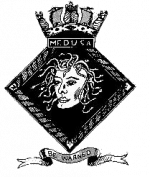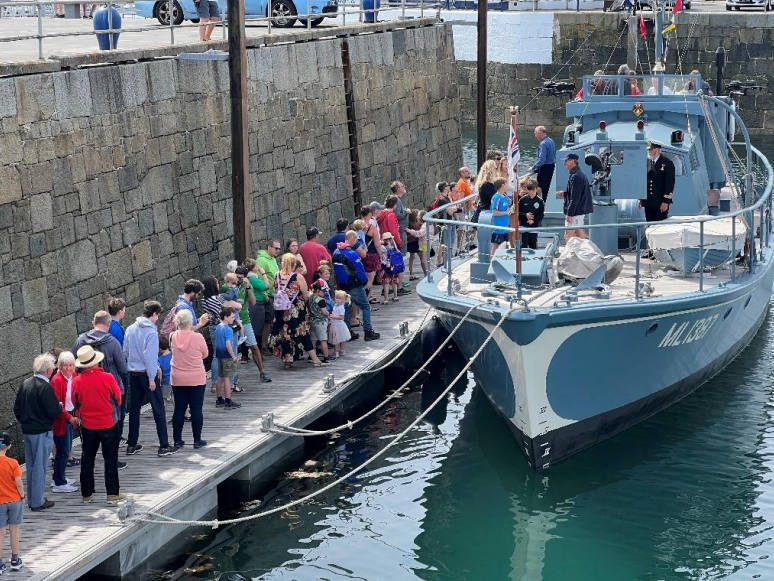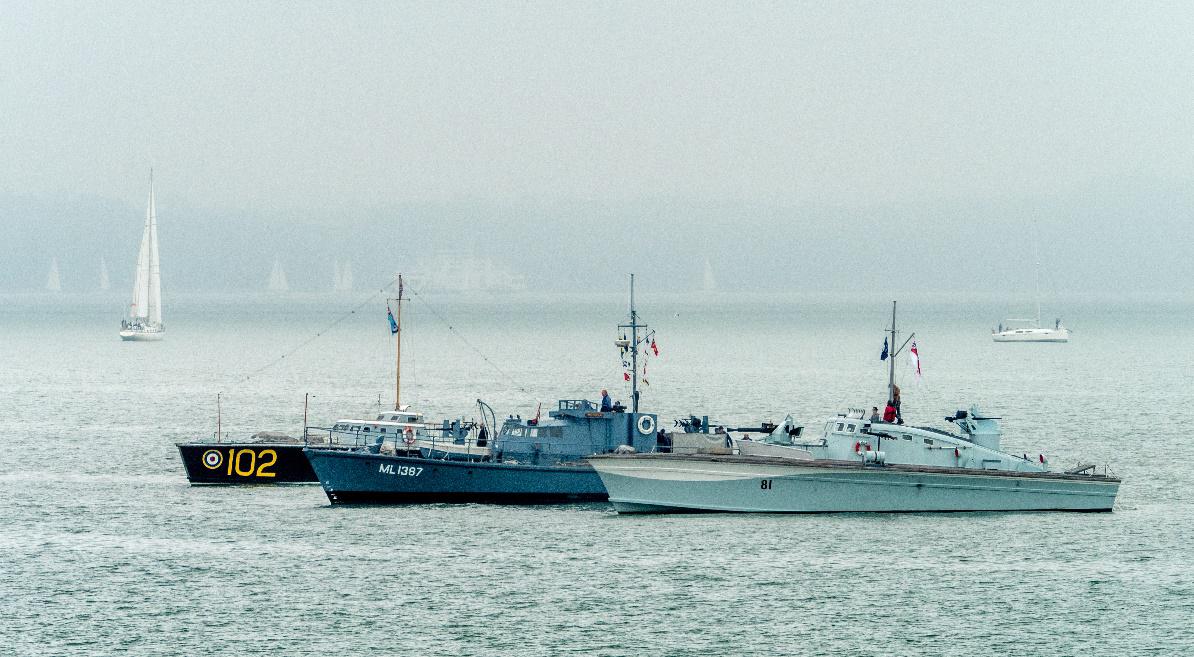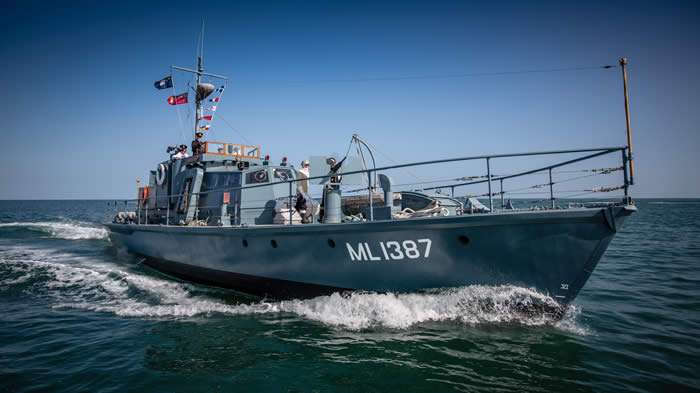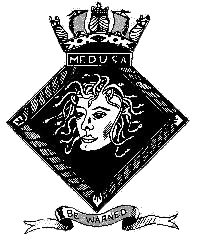
I think its fair to say that this year has not gone according to plan, partly from Medusa, 80 years old this year, reminding us she needs lots of TLC and a summer which so far has been characterised by low pressure after low pressure piling in and upsetting our plans. As usual, though, we have made the best of it.
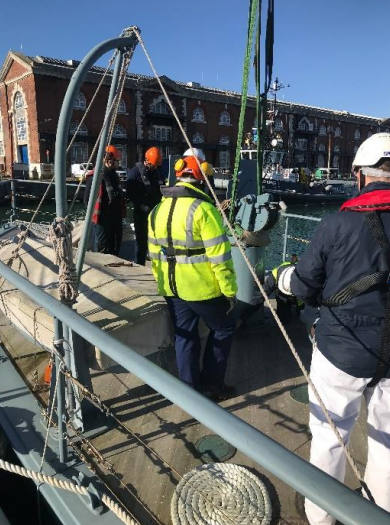
We started our year early in February taking Medusa round to 2 Basin in the Royal Navy dockyard to crane off our 20mm gun mountings. BAE systems kindly offered to overhaul them for us as an apprentice project. This gave the apprentices experience in craning operations controlling a 90 ton crane and then experience in dismantling and reassembling the mountings.
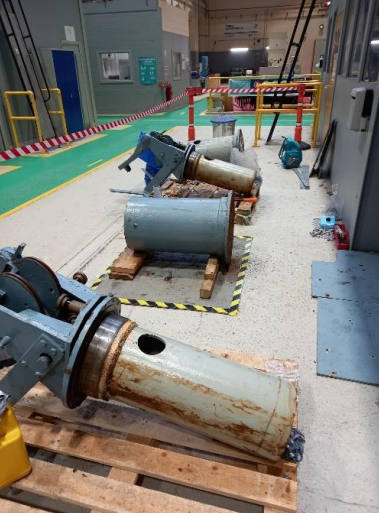
In April we returned and they were refitted. It was quite nice to see us listed on KHM daily movements as “HMS Medusa, Haslar to 2 basin”. KHM watched our departure with refitted guns and commented that it was nice to see Medusa warlike again.
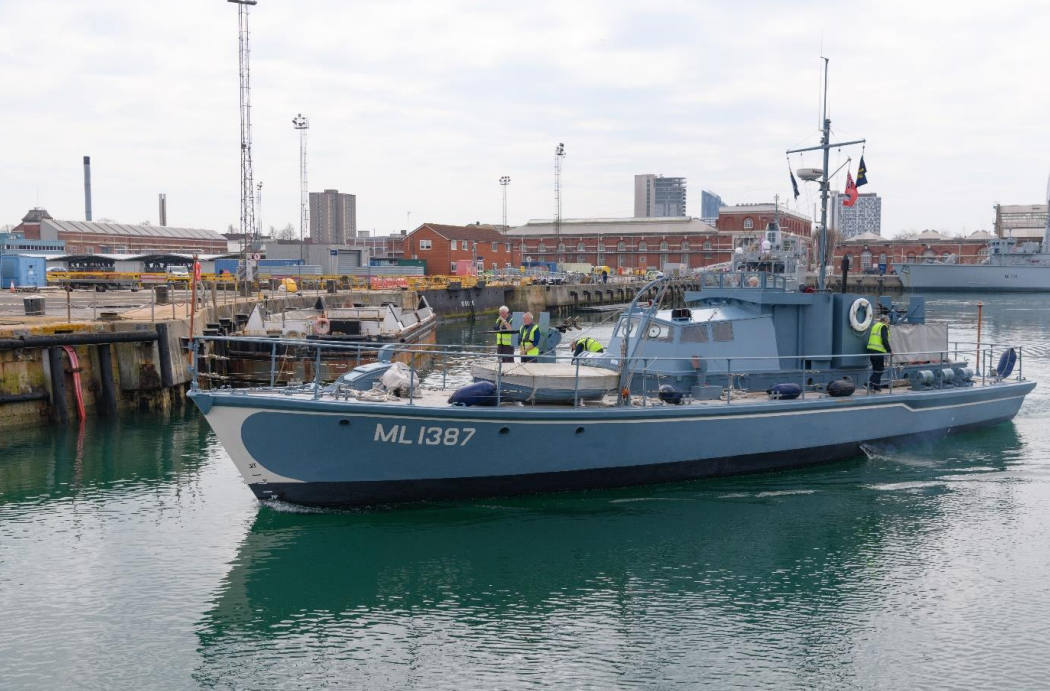
In between we went to Saxon Wharf for our annual lift out. All was well apart from a cutlass bearing on the starboard A bracket (which supports the propeller shaft). The bearing comprises a brass tube with a rubber liner and the shaft rotated within the liner. Our starboard one was not as it should be, the rubber had separated from the brass and attached itself to the shaft. With the wrong surfaces in contact, it was wearing and the rubber was starting to work out of the shell. It clearly needed replacing as a matter of some urgency. We had little choice but to go back in the water as the yard needed the space and we had to source a replacement, so a second lift was booked for June.
Sourcing a bearing for a non-standard imperial shaft diameter was never going to be easy but T Norris of Chichester, a stern gear specialist, came to the rescue and sourced the new bearing for us.
Medusa has a close and enduring relationship with the Royal Navy Coastal Forces Squadron. Every year they hold a dinner for officers past and present and it’s a huge privilege to be invited to mark the relationship. This year the pre-dinner reception was held in the Night Hunters Coastal Forces Museum at Priddy’s Hard with the dinner in the Explosion museum. I was asked to do a short talk introducing the new museum and with some trepidations addressed the assembled sea of gold braid.
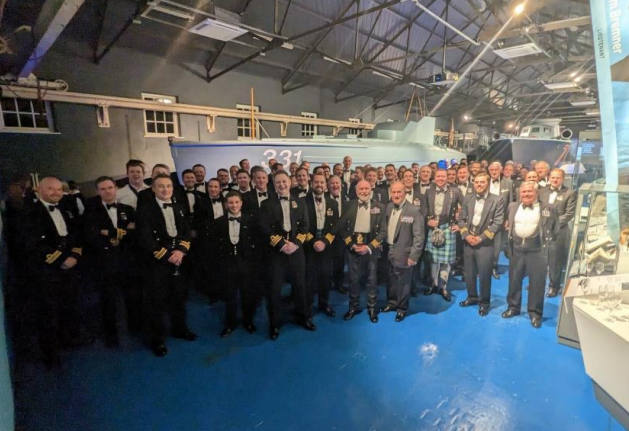
We were scheduled to go to Jersey at the end of April for the boat show and then on to Guernsey for the anniversary of liberation, but it was too big a risk with the failing shaft bearing, so we cancelled this visit. Not an easy decision as this trip would have brought in considerable funds as well as cheap diesel in St Sampson.
On our way back to Haslar, we were called by MASB27 to say she had a problem with a shaft coupling on the centre engine sheared, jammed steering and was taking water. We stood by her and escorted her back to her berth at Boathouse 4 in Portsmouth. Ironically, we had intended to sail in company with her to Jersey. If there were any doubts about the wisdom of cancelling our trip, this dispelled them!
We kept our movements to a minimum until we could replace the bearing. On our normal berth we “spliced the mainbrace” on 6 May to mark the Coronation and on 20 May opened the vessel to visitors as part of the Gosport Marine festival. On 23 May we hosted a visit from the local Royal Navy association.
To mark the anniversary of the D Day sailing, we did a coordinated departure with HMS Blazer and HMS Dasher. We formed up at the top end of the harbour and then steamed down the harbour in line ahead with Medusa leading. We maintained this formation out to Outer Spit Buoy when the formation turned west after which Blazer and Dasher came past Medusa with salutes and dips being exchanged. Blazer and Dasher went to anchor, and Medusa carried on round to Saxon Wharf to lift out for the bearing replacement.
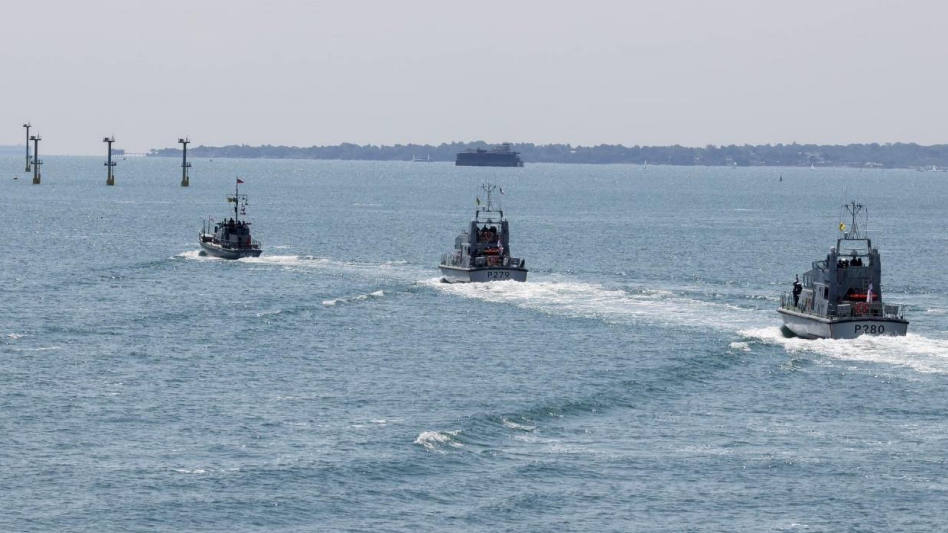
We lifted out on the morning of June 6 with the hope that the job would be straightforward, and we could go back in the same day. It was not to be, the propeller did not want to come off and when we got it off, it became clear that the propeller shaft would have to be removed. This is not trivial as it’s 18 feet long and 2 5/8 inches diameter and weighs a lot. On the far end there is a coupling to join it to the next shaft section which in turn joins to the gearbox. The coupling bolts did not want to come undone and the coupling did not want to come off the shaft. We knew the job was going to need some specialist tools so had engaged a local firm who were recommended to us. As it turned out, their tool of choice was a big hammer!.
Finally, it was all done, and we launched on the Friday then returned to Haslar on the Saturday. It was a relief to be able to resume our schedule. We had missed our annual “long deployment” trip, so scheduled in a week in July for south coast ports visits.
First though we had a weekend exercising with the lifeboats and helicopter. On 24 June we met up with the Gosport and Fareham Inshore Rescue at Stokes Bay. They practised “cross decking”; transferring crew between vessels while underway and then we exercised our man overboard system with volunteers from the lifeboat acting as casualties. The exercise was rounded off with an exercise with the Coastguard helicopter lifting crew from our deck.
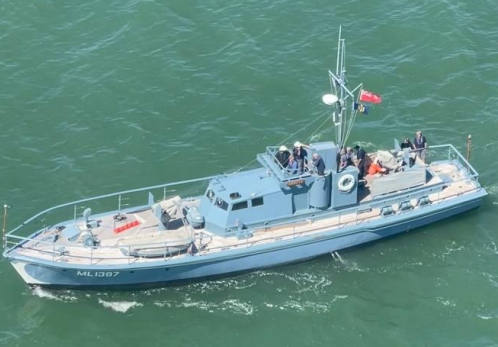
The following day we went to Yarmouth and boarded Martin Gould, the retiring chairman and founder in 1972 of the Freshwater Bay lifeboat, with some friends for a trip round the Needles. We had an escort by the two Freshwater lifeboats down the Needles Channel. We had planned to go round to Freshwater Bay but it was a bit choppy south of the Needles and our guests did not appreciate Medusa jumping around so we turned back for sheltered waters.
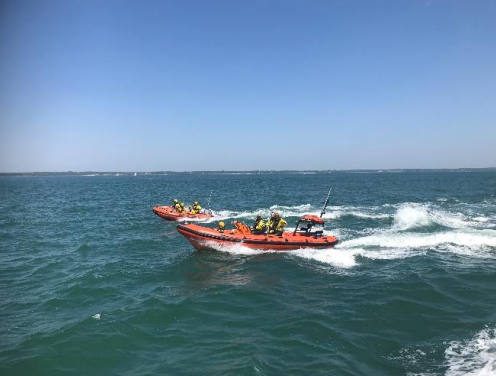
Pre COVID we had gifted a day out for 6 people as a prize for the National Historic Ships photo competition and were finally able to deliver on this. July 8th, we took David Stearne (the winner) and family for a trip over to Cowes. We berthed on the shore side of Trinity Wharf and our guests went ashore for lunch. While we were moored alongside, a sailing boat made a total hash of departing the berth and ended up broadside across Medusa’s bows. The bow is a very solid bronze knife edge, which suffered a little chipped paint whilst the sailing boat ended up with a big split in her hull. They pushed off and scuttled away without an apology and we noted that this was one of the occasions when steam does not give way to sail.
Our replanned, and shorter, “long deployment” was due to start on 15th July with a passage to Weymouth then to Portland on the 17th. The weather on both 15th and 16th was nasty with gale force winds so we did not sail. It calmed down a bit by the 17th so we departed bu t still had a fairly lively passage to Portland, the main deck certainly got a good wash as did the bridge team a couple of times.
After a “clean ship” we welcomed the Mayor of Portland, Councillor Carralyn Parkes and her escort Councillor Berny Parkes on board on the 18th. Both she and her escort were very interested in Medusa and stayed for three hours. Our arrival had coincided with the arrival of the accommodation barge for immigrants and the locals were in uproar about it, so Medusa provided a place of refuge for the Mayor as well as an interesting venue.
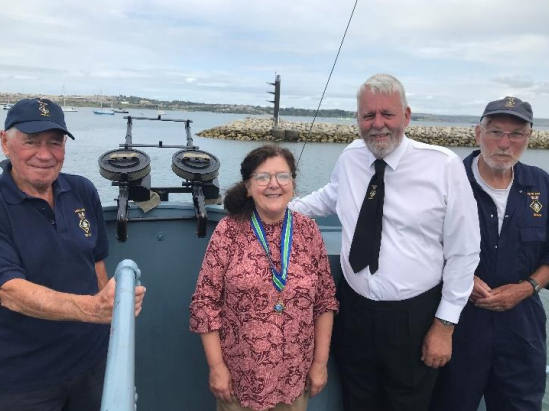
The crew were entertained that evening by Mike and Pam Boyce at their home on top of Portland with stunning views sweeping from Dartmouth to St Albans head. Mike purchased Medusa from the Navy in 1968 and was her skipper for the next 45 years. Now happily retired from this responsibility he takes a keen interest in her and Pam maintains the connection as secretary of the Medusa Support Group.
At Portland, we berthed in the marina but it gave us pause for thought that we were only yards from where Medusa sailed on the 4th June for her critical D day role. The former coastal forces pens are within the dockyard and not accessible, but they are recorded in this painting which is held by the IWM.
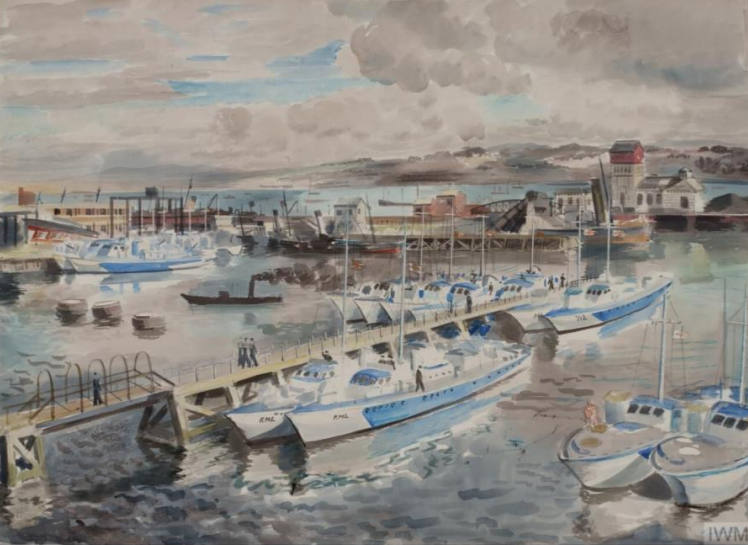
From Portland we had a calm passage to Poole with an escort of three dolphins riding our bow wave for over and hour. The National Coastwatch stations at St Albans and Swanage watched our progress with interest and we spoke to both on VHF (Swanage called us to tell us about the dolphins). We berthed at the marina at Poole Quay and immediately attracted a lot of interest. We had intended to spend a day in Poole and return on 22 July but again the weather intervened with
near SW gale forecast. We therefore returned on the Friday and were very glad we did when we watched the start of the Fastnet the next day and saw dismasted sailing boats limping back into Portsmouth.
On September 1 we will be visiting Bucklers hard and plan a celebration to mark Medusa’s upcoming 80th birthday. After that its our Trafalgar Night inner/Medusa birthday on 14 October and Remembrance in November.
Maintenance is an ongoing task, Medusa is painted top to toe at least once a year and there are always maintenance jobs to be done on deck as well as in the engine room. Earlier in the year we found a soft area in a piece of our guard rail which has been replaced by Steve, our shipwright. We all watched in awe as he cuts a scarph joint by eye and it fitted perfectly without further adjustment.
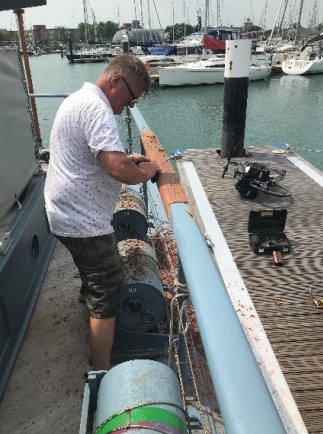
Some maintenance tasks are less popular but still need to be done. Medusa has her original Blake toilets which were last overhauled 10 years ago and now looking a bit sad and leaky. Tim Hamlin and Chris Harman undertook the task and two of the three now look like new. The last one to be done this winter.
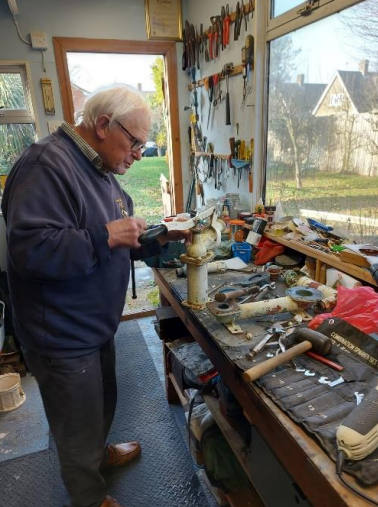
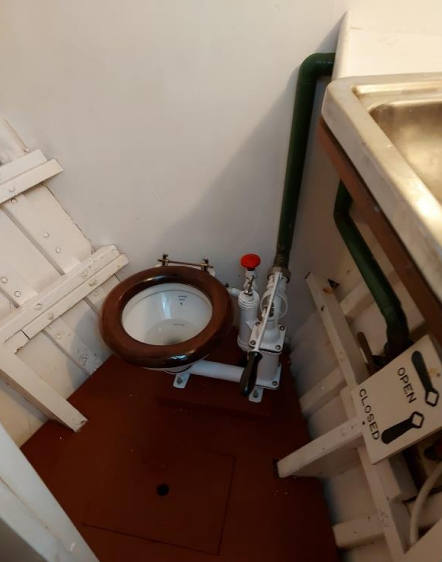
One thing very special to us is visits by veterans who have served on HDMLs and their family. Just before Christmas we had a visit from Dennis Gilbert and his family. Dennis was a telegraphist and served on HDML 1223 and Fairmiles in the Mediterranean. He is now over 100 but loved being back on an HDML and for him the years just slipped away back to 1944. He was soon back in the wireless office sending morse code. It was very clear, and I was able to read it perfectly much to his surprise.
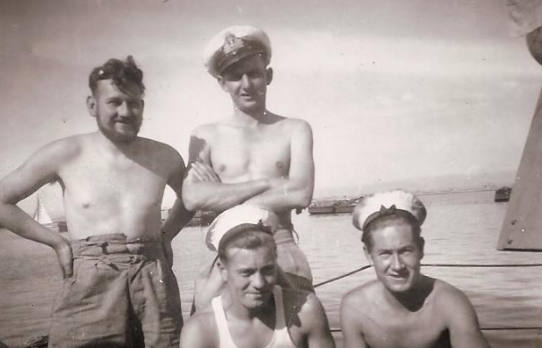
He has written up his time in the Navy and his family have kindly left us a copy. Here is his description of the after part of 1223.
“To say that the accommodation on ML1223 was adequate would be gilding the lily somewhat. The wardroom occupied the stern and was reached by a near vertical stairway to the wardroom flat. The cabin for the Chief Motor Mech and the coxswain led off the flat, as did the W/T cabin (my kingdom). That was a rather posh name for what was actually a cupboard, not even a walk-in cupboard, as the deckhead was too low to allow standing room. Access was by a sliding door. You put your bum in first, lowering yourself onto the seat and twisting your upper half around carefully, with your chest in contact with the table, and with two inches of headroom below the deckhead. There was room on the table for a transmitter, a receiving set, a Morse key, logbook, message pad, and on the bulkhead was a little locker for stationary, codebooks, etc. Under the table there was just room for my legs, and enough space for the bucket, which in the first few weeks was indispensable.”
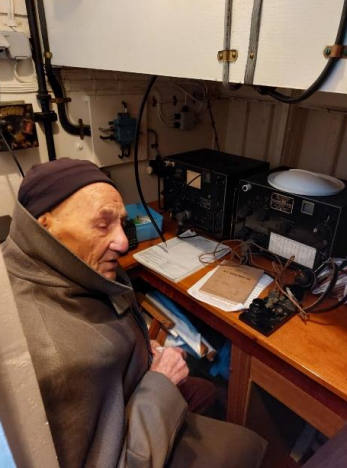
On 23 June, we had a visit from brother and sister Paul and Linda Wilson. Their uncle, Robert Wilson served on HDML1057 based in Kilindi (Mombassa). On 13 October 1944 1057 was at sea with 1108 and had been doing a practise shoot when she blew up sinking by the stern in just three minutes. Survivors were picked up by 1108 but Robert was not among them and was the only crew member lost. I have been in communication with Linda for 15 years and was able to help a little in their quest to find out what happened and if, as rumour suggested, their uncle was responsible. When they came to visit Linda and Paul brought with them the transcript of the board of enquiry following the loss and we were able to go through this looking at the parts of ship mentioned.
In summary this is what happened. 1057 was carrying a quantity of 1 ¼ pound demolition charges (Medusa used these post D Day to deter German swimmers and one-man submarines). The charges needed to be exchanged at regular intervals and new charges had been loaded the day before, but the old ones not taken ashore. The old ones were on the after end of the wardroom coachroof under a piece of tarpaulin. Robert Wilson had been firing a Lewis gun nearby and had also smoked a cigarette. It was these charges that exploded, wrecking the vessel as far forward as the bridge and killing Robert. The board of enquiry considered whether a Lewis cartridge or a cigarette end may have been responsible but concluded it was the heat from the sun under the tarpaulin that had set the charges off. The evidence from a base armourer on how unstable these charges were in heat was the deciding factor.
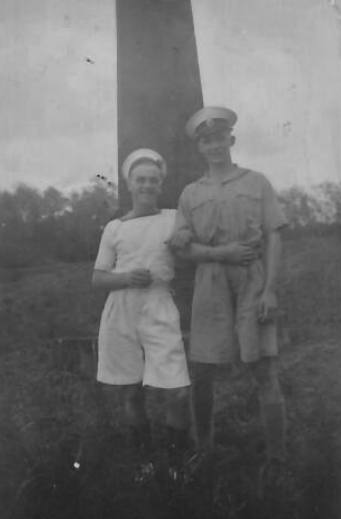
Linda and Paul went away understanding what had happened, that their uncle was not responsible and with a picture of how he lived and worked in a vessel identical to Medusa.
We monitor the surviving HDMLS around the world and keep in touch with owners where we can. Currently we believe there are 19 hulls worldwide (out of 464 built) though a few of these have not been heard of for a while. Medusa is the only one in original configuration and seaworthy. ML1200 in Cape Town had disappeared from Google Earth and we feared she had gone. In the Spring, Richard Hobbs was in Cape Town and located her back on her usual berth.
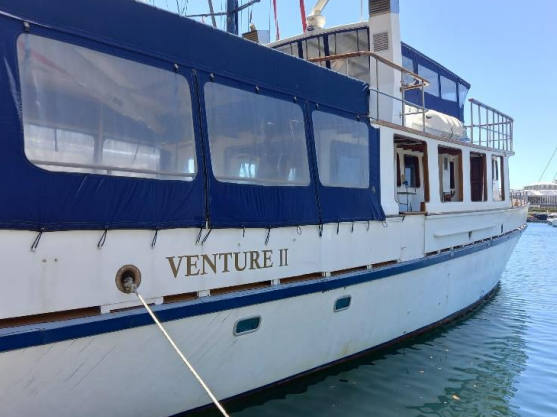
It’s been an interesting year so far, little has gone to plan and rather more cash has gone out than come in. We could not make ends meet without the time and effort put in by our volunteers who deserve a huge thank you for hard work, tolerance, and flexibility with our changing plans.
